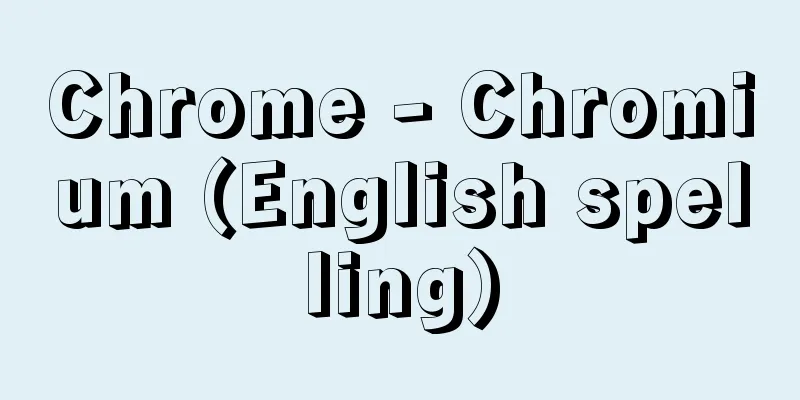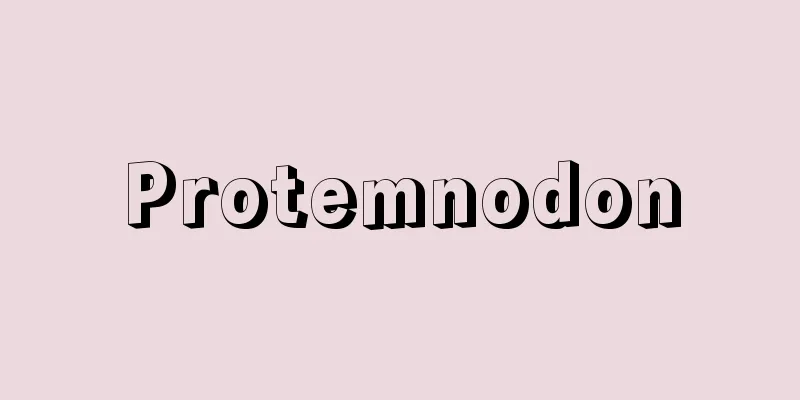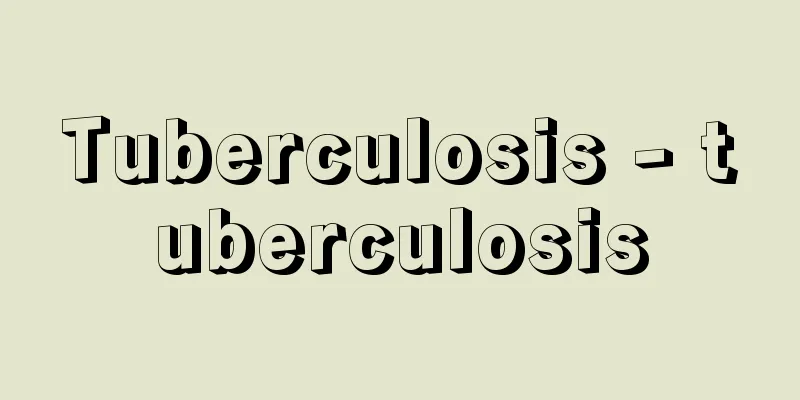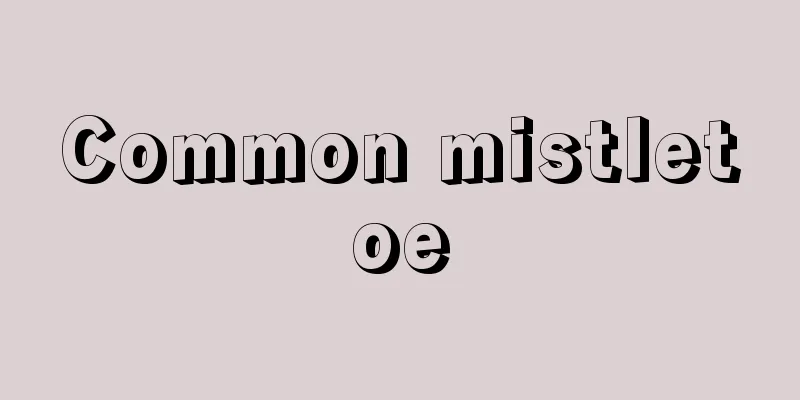Chrome - Chromium (English spelling)

|
A metallic element in Group 6 of the periodic table. Atomic number 24, chemical symbol Cr. It was discovered in 1797 by the Frenchman Vauquelin in the Siberian mineral crotonite PbCrO4 . Chromium was named after the Greek word chroma, meaning "color," because many chromium compounds are brightly colored. The element was obtained by reducing chromium trioxide Cr2O3 with carbon, which contains traces of carbon, and the carbon-free pure metal was obtained by reducing it with aluminum. Its uses in leather tanning and pigments began to be developed in the early 19th century, but it was not until 1910 that it was used in steelmaking. [Iwamoto Shinbu] Existence and productionThe main ore is chromite (main component FeCr 2 O 4 ), which is produced in South Africa, Russia, and other places. When the ore is melted with an alkali carbonate, air is blown in to oxidize the chromium to hexavalent form, and the solution is extracted with water and made acidic, dichromate is obtained. This is reduced with sulfur or carbon to produce chromium(III) oxide. Chromium(III) oxide is also used as a raw material for the manufacture of chromium compounds. When chromium(III) oxide is heated and reduced with silicon, aluminum, magnesium, etc., α (alpha) chromium with a body-centered cubic structure is obtained, and when an aqueous solution of chromium(III) salt is electrolyzed, β (beta) chromium with a hexagonal crystal system is obtained. The β type is of higher purity than the α type. Chromium of even higher purity can be obtained by heating β type electrolytic chromium to 500-600°C in a chlorine gas flow, and reducing the resulting chromium(III) chloride with hydrogen. A metal with a silvery-white luster. The lattice constants of the body-centered cubic α type are a = 2.88 Å, and the hexagonal β type are a = 2.72 and c = 4.42 Å. The β type is a metastable phase and transforms to the α type at 800°C. [Iwamoto Shinbu] natureIt is extremely stable at room temperature and is not affected by air or water. It dissolves in hydrochloric acid or dilute sulfuric acid, generating hydrogen, and forms a solution of chromium(II) salts, but is quickly oxidized to chromium(III) by oxygen in the air, and the color of the solution changes from blue to green. When immersed in an oxidizing acid such as nitric acid, chromic acid, phosphoric acid, chloric acid, perchloric acid, or aqua regia, a strong thin layer of oxide is formed on the metal surface, making it passive and insoluble. It is thought that the corrosion resistance of chromium and chromium alloys is based on this fact. It dissolves in concentrated sulfuric acid, generating sulfur dioxide, and forms a solution of chromium(III) salts. At high temperatures, it reacts with chlorine, sulfur, oxygen, carbon, nitrogen, etc. to form chromium trichloride (CrCl 3 ) , dichromium trisulfide (Cr 2 S 3 ) , dichromium trioxide (Cr 2 O 3 ) , trichromium dicarbide (Cr 3 C 2 ) , and chromium nitride (CrN), respectively. The oxidation states of chromium are usually +III and +VI, and the +II state is unstable and is easily oxidized to +III. Taking advantage of this property, solutions of chromium( II ) salts are used as oxygen absorbers. In addition to these oxidation states, chromium trioxide CrO3 is obtained by pyrolysis of the vapor of chromium dioxide dichloride CrCl2O2 (chromyl chloride CrO2Cl2 ) . Double oxides of divalent metals and chromium(III) , MCr2O4 (where M is barium, copper, etc.), are sometimes called chromates, but this is incorrect, as they have a spinel structure and do not have ions such as CrO2- or Cr2O42- . Anhydrous halides of chromium(III) are considered to be covalent, except for fluoride, which is ionic. However, in the hydrates, they form salts of complex ions with water and chloride ions as ligands. For example, there are three known types of chromium(III) chloride hexahydrate, each with a different crystal color. [CrCl 2 (H 2 O) 4 ]Cl・2H 2 O Dark green Chromium(VI) has a high ionic potential and always exists in a state bound to atoms of elements with high electronegativity. The chromate ion has a regular tetrahedral structure, and many of its salts are poorly soluble. Dichromate is a strong oxidizing agent in acidic solutions. A compound of chromium with the oxidation number 0 is chromium hexacarbonyl [Cr(CO) 6 ], and derivatives in which the carbonyl is replaced by amines such as pyridine are known. [Iwamoto Shinbu] ApplicationsAn alloy containing 50-70% chromium, with the remainder being iron, and a few percent or less of carbon and silicon, is called ferrochrome (ferroalloy), and is manufactured by the direct reduction of chromite. Chromium alloy steel, refined by adding this as a chromium source to steel, exhibits excellent corrosion resistance and mechanical properties, and alloys with a chromium content of 12% or more are called stainless steel. Some chromium and nickel alloys have excellent heat resistance, and refractory bricks containing chromium(III) oxide are used as wall materials for electric furnaces and converters. Chrome plating is not only highly corrosion resistant and decorative, but also has a low coefficient of friction. [Iwamoto Shinbu] Chromium ToxicityMetallic chromium or chromium(III) compounds are not toxic, but chromium(VI) compounds are irritating, corrosive, and often dangerous. These chromium(VI) compounds are generally referred to as "hexavalent chromium". For example, inhaling fine powders of potassium chromate K 2 CrO 4 or potassium dichromate K 2 Cr 2 O 7 can affect the nasal mucosa and damage the respiratory system. The maximum allowable exposure level in air is 0.1 milligrams of CrO 3 per cubic meter for an 8-hour daily exposure. [Iwamoto Shinbu] [References] | | | [Additional information] |©Shogakukan "> Periodic Table Source: Shogakukan Encyclopedia Nipponica About Encyclopedia Nipponica Information | Legend |
|
周期表第6族に属する金属元素の一つ。原子番号24、元素記号Cr。1797年フランスのボークランがシベリア産の鉱物である紅鉛(こうえん)鉱PbCrO4から発見した。クロムの化合物には鮮やかな色を示すものが多いことから、ギリシア語で「色」を意味するchromaにちなんで命名された。単体は三酸化二クロムCr2O3の炭素還元によって得られたが、これは微量の炭素を含んでおり、無炭素の純金属はアルミニウム還元によって得られた。19世紀初めから革なめしや顔料などの用途が開発されたが、製鋼に利用されたのは1910年以降である。 [岩本振武] 存在と製法主要鉱石はクロム鉄鉱(主成分FeCr2O4)であり、南アフリカ、ロシアなどに産出する。鉱石を炭酸アルカリと融解し、空気を吹き込んでクロムを6価に酸化し、水で抽出して酸性とすると、二クロム酸塩を得る。これを硫黄(いおう)あるいは炭素で還元し、酸化クロム(Ⅲ)とする。酸化クロム(Ⅲ)はクロム化合物製造の原料としても用いられる。酸化クロム(Ⅲ)をケイ素、アルミニウム、マグネシウムなどで加熱還元すると、体心立方構造のα(アルファ)型クロムが得られ、クロム(Ⅲ)塩水溶液を電解すると、六方晶系のβ(ベータ)型クロムを得る。β型はα型より高純度である。さらに純度の高いクロムは、β型の電解クロムを塩素気流中で500~600℃に加熱して生じた塩化クロム(Ⅲ)を水素で還元すると得られる。銀白色の光沢を示す金属。体心立方構造のα型は格子定数a=2.88Å、六方構造のβ型はa=2.72、c=4.42Åである。β型は準安定相で、800℃でα型に転移する。 [岩本振武] 性質常温ではきわめて安定で、空気や水には侵されない。塩酸や希硫酸には水素を発生して溶け、クロム(Ⅱ)塩の溶液となるが、空気中の酸素によって迅速にクロム(Ⅲ)に酸化され、溶液の色は青から緑に変わる。硝酸、クロム酸、リン酸、塩素酸、過塩素酸、王水などの酸化性の酸に浸すと、金属の表面に酸化物の強固な薄膜層を生じ、不動態(不働態)となって溶解しない。クロムおよびクロム合金が耐食性であるのは、この事実に基づくものと考えられている。濃硫酸には二酸化硫黄を発生しながら溶け、クロム(Ⅲ)塩の溶液となる。 高温度では塩素、硫黄、酸素、炭素、窒素などと反応して、それぞれ三塩化クロムCrCl3、三硫化二クロムCr2S3、三酸化二クロムCr2O3、二炭化三クロムCr3C2、窒化クロムCrNとなる。 クロムに通常みられる酸化数は+Ⅲおよび+Ⅵであり、+Ⅱの状態は不安定で、容易に+Ⅲの状態へ酸化される。この性質を利用して、クロム(Ⅱ)塩の溶液は酸素吸収剤として用いられる。酸化物としては、これらの酸化数のもののほか、二塩化二酸化クロムCrCl2O2(塩化クロミルCrO2Cl2)の蒸気を熱分解して得られる三酸化クロムCrO3がある。二価金属とクロム(Ⅲ)との複酸化物MCr2O4(Mはバリウム、銅など)は亜クロム酸塩とよばれることもあるが、それは誤りで、スピネル型構造をとり、CrO2-あるいはCr2O42-のようなイオンは存在しない。クロム(Ⅲ)の無水のハロゲン化物は、フッ化物がイオン結合性であるほかは、共有結合性であると考えられている。しかし、水和物では、水および塩化物イオンが配位子となった錯イオンの塩となる。たとえば、塩化クロム(Ⅲ)六水和物には3種類あることが知られており、それぞれの結晶の色も異なっている。 [CrCl2(H2O)4]Cl・2H2O 深緑 クロム(Ⅵ)はイオンポテンシャルが大きく、つねに電気陰性度の大きい元素の原子と結合した状態で存在する。クロム酸イオンは正四面体型構造をとり、その塩の多くは難溶性である。二クロム酸塩は酸性溶液中で強力な酸化剤となる。酸化数0のクロムの化合物としてはヘキサカルボニルクロム[Cr(CO)6]があり、カルボニルをピリジンなどのアミンで置換した誘導体などが知られている。 [岩本振武] 用途クロム含量が50~70%、残りが鉄ならびに数%以下の炭素およびケイ素を含む合金をフェロクロム(フェロアロイ)とよび、クロム鉄鉱の直接還元によって製造される。これをクロム源として鋼に添加して精錬されたクロム合金鋼は、耐食性および機械的に優れた性質を示し、クロム含量が12%以上のものをステンレス鋼とよぶ。クロムとニッケルの合金には耐熱性に優れたものがあり、また酸化クロム(Ⅲ)を添加した耐火れんがは、電気炉や転炉の壁材に用いられる。クロムめっきは耐食性と装飾性に優れるだけでなく、摩擦係数も小さい。 [岩本振武] クロムの毒性金属クロムあるいはクロム(Ⅲ)化合物には毒性はないが、クロム(Ⅵ)化合物は刺激性があり、腐食作用が強く、危険であることが多い。一般に「六価クロム」とよばれるものは、このクロム(Ⅵ)化合物のことである。たとえば、クロム酸カリウムK2CrO4や二クロム酸カリウムK2Cr2O7などの微粉を吸い込むと鼻の粘膜が冒され、呼吸系統を傷める。空気中での最大許容量は1日8時間の暴露で、1立方メートル中0.1ミリグラムCrO3とされる。 [岩本振武] [参照項目] | | | [補完資料] |©Shogakukan"> 周期表 出典 小学館 日本大百科全書(ニッポニカ)日本大百科全書(ニッポニカ)について 情報 | 凡例 |
Recommend
Spot analysis - Tenteikibunseki (English spelling)
A type of micro-qualitative analysis, this method...
Kenboro - Kakeboro
...A bag-like cloth worn over the back of armor t...
Okake Daisen Tsugi - Okake Daisen Tsugi
… Traditional kiri-gumi joints used in Japanese w...
Kyogoku Clan
A branch of the Sasaki clan of the Uda Genji clan...
Monster net - Kaimo
…the capillaries that are located most peripheral...
Bloor, WR (English spelling) BloorWR
…While the latter three are easy to define, lipid...
Uemura Bunrakuken
The head of the Bunraku puppet theatre company. T...
Epigraphy - higaku (English spelling)
A school of calligraphy that studies the calligrap...
Red flatworm (Cucujus coccinatus)
An insect of the family Lacertidae in the order Co...
Oil ship transport
A tax paid by oil-pressing businesses in the Edo p...
Duck pattern - Kamoe
〘 noun 〙 = Kamoi (lintel) (10 volumes of the Wamyō...
Mazon, A. (English spelling) MazonA
...In Poland, Aleksander Brückner (1856-1939), au...
Round-about trade
This refers to trade that is conducted in a round...
《Wita Funyo Alice》
...Other interesting works include Nosaka Akiyuki...
Linum - Linum
...After the fiber has been removed, the stems ar...









